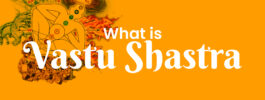Namaskar,
In the realm of Vastu Shastra, the ancient science of architecture and design, each of the five elements carries its own weight in the creation of a harmonious abode. Among these, water stands as a pillar of immense importance, holding sway over the intricate tapestry of Vastu Shastra. Today, we shall embark on a detailed exploration of the water element’s significance within this sacred science and delve into the vital role played by its placement in a favorable direction.
But before we embark on this journey, let us first gain a rudimentary understanding of Vastu. When we speak of Vastu, we encompass any structure that serves as a person’s home or workplace. Vastu can manifest as a bungalow, a row house, or an apartment, irrespective of its position on the ground floor or even if it stands tall on the twenty-fifth floor. It extends its influence over offices, factories, shops, and, of course, our very own houses. Regardless of the floor it occupies or its architectural style, every structure imparts Vastu energy. Therefore, the principles governing the water element remain consistent across all structures—Vastu is Vastu, after all. Furthermore, these principles hold true not only in the northern hemisphere but also in its southern counterpart.
Now, turning our attention to the water element, we must bear in mind that its scope extends beyond the boundaries of idyllic lakes or picturesque ponds adjacent to our abodes. It encompasses all sources of water, from humble clay pitchers brimming with life-giving elixir to more elaborate manifestations such as borewells, water tanks, and even ornate artificial water fountains. Each droplet contained within these sources signifies the sacred water element, deserving of our utmost consideration. It is of paramount importance to place these water sources, whether they surround our dwelling or find their way inside, in a manner that aligns harmoniously with the principles set forth by Vastu Shastra.
By adhering to these principles, we unlock the dormant wellspring of positive energy intrinsic to the water element. Its meandering presence, whether a cascading torrent or a tranquil pool, possesses the power to foster balance and harmony in our environment. As we navigate the intricate path laid out by Vastu Shastra, let us remember that our reverence for water’s essence remains unaltered, transcending the boundaries of hemisphere and geography. The ceaseless rhythm of this life-giving element binds us all together, bridging gaps and nurturing our deepest connection to the very essence of our existence.
The Vishwakarma Prakash reveals a significant verse that elucidates the suitable placement of water elements within the realm of Vastu. Let us explore the verse from the Vishwakarma Prakash:
सर्वासु दिक्षु सलिलं प्रकुर्याद् विहाय नैरुत्य यम दक्षिण।
पूर्व उत्तर ईशान जलेश दिक्षुकृतं जलं सौख्य सुतप्रदं च।।
न पूर्वकं वारुणादिक् स्थितम् च विवर्जयेत् मध्य गृहस्थितं च।
– विश्वकर्मा प्रकाश
“In all directions, water should be placed, except for the North-West, South-West, South, and South-East corners of your Vastu. Even the central area of your Vastu should abstain from housing a water element. It is considered propitious to have the water element positioned in the North, North-East, East, or West directions of your Vastu.”
Understanding the implications of erroneously situating the Jal Tattva (water element) or heedlessly employing it holds paramount importance. Such ill-placed or inconsiderate usage of the Jal Tattva can yield unfavorable outcomes for the inhabitants of the Vastu.
Mahabharata, a tale of profound significance, unravels a crucial event after the Pandavas’ triumphant return to Hastinapur following Draupadi’s swayamvar. Bhisma Pitamah and Vidur, possessing unrivaled wisdom, counseled King Dhritarashtra to divide the kingdom, bestowing one part upon the Kauravas and granting the other, Khandavprastha, to the Pandavas. Accompanied by the divine presence of Shree Krishna, the Pandavas embark on a journey into the heart of Khandavprastha, a dense forest teeming with life. Deeply cognizant of their need for assistance in establishing a city amidst the wilderness, they beseech Lord Indra for his divine intervention.
At the bidding of Lord Indra, the celestial architect Vishwakarma manifests his unparalleled craftsmanship, erecting a splendid city named Indraprastha. This majestic city, meticulously designed, becomes a testament to the Pandavas’ glory, inciting not only pride within its dwellers but also evoking envy in the hearts of distant onlookers. Mahabharata eloquently describes this transformative moment:
“विश्वकर्मन् महाप्राज्ञ अद्यप्रभृति तत् पुरम्।
इन्द्रप्रस्थम् इति ख्यातं दिव्यं रम्यं भविष्यति।।”
– महाभारत
“Bathed in the brilliance of Vishwakarma’s divine vision, the city of Indraprastha arose. Such ethereal grandeur had never before graced mortal eyes.”
Indraprastha stands as a living testament to the multifaceted artistry involved in its creation, with each element woven seamlessly together. However, it is the water element that reigns supreme, not merely as a functional necessity but as an embodiment of ethereal beauty. Mahabharata elegantly captures this essence:
सागर प्रतिरुपाभिः परिखाभिर् अलंकृतां।
– महाभारत
“Encircling Indraprastha, a myriad of water-filled moats, reflecting the radiance of the heavens, manifested like a sparkling sea. The inhabitants reveled in the opulence, while outsiders marveled, their hearts consumed by envy.”
After Indraprastha was entirely established, an incident took place which is very important to understand. There was a forest in Khandavprastha in which a snake named Taksht used to live. Takshata used to afflict people a lot. So, with the help of Lord Indra, Arjuna burnt that forest along with Shree Krishna. When the forest was burning down, Arjuna realized that a demon named Maya was residing in the house of Takshata Naaga. Arjuna saved the demon as he came to know that Maya was an expert in skilled architecture and Vastu Shastra. This incident is also given in a verse of Mahabharata.
“विज्ञाय दानवेन्द्राणां मयं वै शिल्पिनां वरम्।”
– महाभारत
After thanking him, Maya asked Arjuna to give him some work that can show his gratitude and service. Arjuna said to Maya that he hadn’t saved him with the feeling of getting something in return. But the demon Maya kept on insisting. On Maya’s constant requests, Arjuna told Maya to ask Shree Krishna Ji. Then, Shree Krishna told Maya to build a unique palace for the Pandavas to live in and also an assembly for Yudhisthir. On Lord Krishna’s suggestion, Maya built a unique palace for Pandavas and then, he left Indraprastha. Even this incident is given in a verse of Mahabharata.
“ईदृशीं तां सभां कृत्वा मासैः परि चतुर्दशै।
निष्ठितां धर्मराजाय मयो राज्ञे नयवेदयत।।”
– महाभारत
Once the grand palace of Indraprastha stood in all its glory, an event of great significance unfolded. It was during the auspicious event of the Rajasuya Yagna, performed by the noble Pandavas, that the renowned incident of Duryodhana’s visit occurred.
Maya, the master architect, had fashioned an enigmatic palace for the Pandavas. The mesmerizing design featured floors so flawlessly polished that they created the illusion of shimmering water. Conversely, areas filled with water were crafted to appear as ordinary ground. Thus, the element of water was ingeniously integrated throughout the palace’s composition.
In the heart of this architectural marvel, Maya had ingeniously constructed a concealed water-filled trough. Legend has it that as Duryodhana ventured into the palace, he became entranced by its illusive nature. Upon reaching the central area, he mistook the trough for a solid floor and tumbled into its aquatic depths. In that moment, a voice from the surrounding crowd purportedly exclaimed, “The blind’s son is blind as well.” Though popular belief attributes this declaration to Draupadi, esteemed scholars argue that it was the utterance of an unidentified individual. The consequences that followed thereafter are etched in history.
The entire cataclysmic war of the Mahabharata can be traced back to the profound impact of a single statement. And at the heart of this pivotal turn of events lay a fault in Vastu Shastra, the ancient Indian science of architecture and design. As we have discerned, the inherent principles of Vastu dictate that the water element should not find its place in the center of a structure. Regrettably, this was precisely the flaw in the construction of the palace.
In this unique abode, a hose filled with water was cunningly incorporated, constituting a significant deviation from the tenets of Vastu Shastra. This deliberate misuse of the water element purportedly aimed to unsettle the minds of the Pandavas. Consequently, we can deduce that the improper deployment of water in the context of Vastu Shastra carries grave repercussions, capable of engendering desolation and destruction.
To further comprehend the auspicious or inauspicious ramifications of incorporating water elements in different directions, we must turn to the venerable text of Muhurat Chintamani – the authoritative scripture of Vastu Shastra. This insightful tome elucidates the outcomes that can be anticipated depending on the placement of water elements within our abodes. The direction of any architectural entity is conventionally determined from its center, and Muhurat Chintamani expounds upon the consequences of locating the water element in the core. Let us explore these verses and unravel their wisdom.
कूपे वास्तोर मध्यदेशे अर्थनाशः तु ईशान्यादौ पुष्टि एश्वर्य वृद्धिः।
सूनोर् नाशः स्त्रिविनाशो मृतिश्च सम्पत् पीडा शत्रुतः स्यात् च सौख्यम्।।
– मुहूर्त चिन्तामणि
“If there is a water element in the middle of Vastu, wealth gets destroyed. Having a water element in the North-East direction or Ishaan Kone will provide you with growth opportunities. Having a water element in the East direction gives you wealth and glamour. The water element in the South-East or Agni Kone give problems related to kids. The water element in the South direction gives problems related to women. Having a water element in the South-West corner results in death or death-like crises. The water element in the West direction provides you with money or wealth. The water element in the North-West corner gives trouble from enemies. And having a water element in the North direction provides you with happiness.”
By adhering to the specific requirements and favorable directions, one can undoubtedly invite happiness and prosperity into their living space through the strategic placement of a water element. It is therefore wise to embrace the norms outlined by Vastu Shastra when it comes to incorporating water elements, as they hold the key to attracting positive outcomes in all aspects of life.
May your journey be blessed with harmony and abundance as you embrace the teachings of Vastu Shastra.
Shubham Bhavatu.








Comments (2)
Jyoti Singh
August 4, 2023 at 5:41 amThis information is very insightful. I agree, whaler is very major element in our body, earth and important for survival.
This it’s significance in vastu is very prominent.
Diana
October 21, 2023 at 12:53 pmHello
Do we use compass for finding directions in home?
Is it different in vastu ?
Please answer ,it is important to me🙏